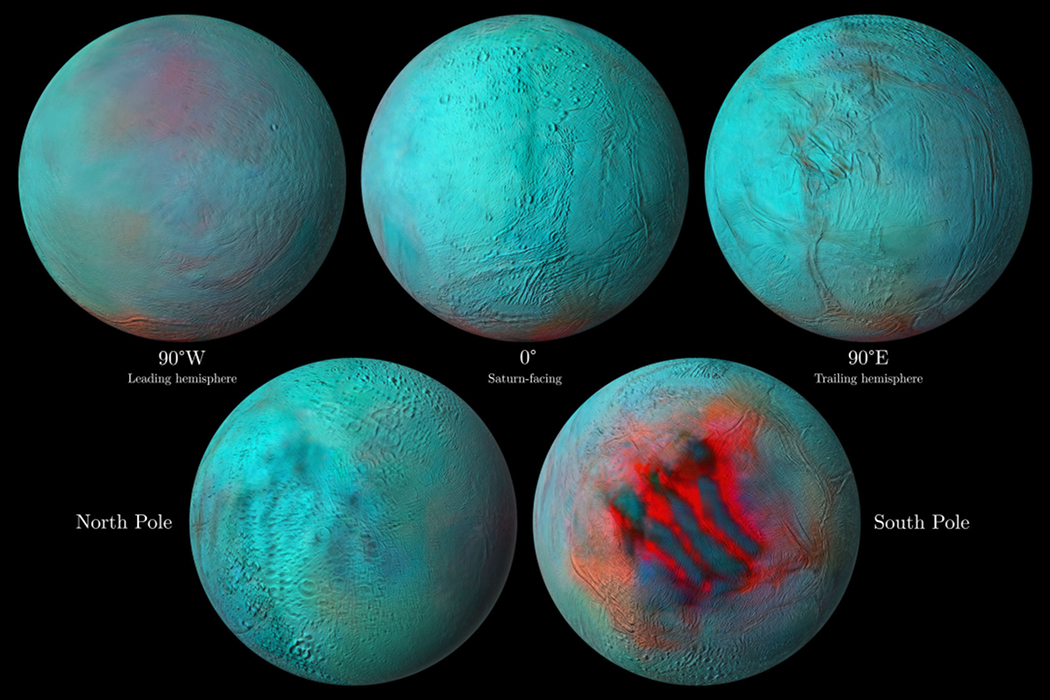
One of our Solar System's most tantalizing worlds, icy Saturnian moon Enceladus appears in these detailed hemisphere views from the Cassini spacecraft. In false color, the five panels present 13 years of infrared image data from Cassini's Visual and Infrared Mapping Spectrometer and Imaging Science Subsystem. Fresh ice is colored red, and the most dramatic features look like long gashes in the 500 kilometer diameter moon's south polar region. They correspond to the location of tiger stripes, surface fractures that likely connect to an ocean beneath the Enceladus ice shell. The fractures are the source of the moon's icy plumes that continuously spew into space. The plumes were discovered by by Cassini in 2005. Now, reddish hues in the northern half of the leading hemisphere view also indicate a recent resurfacing of other regions of the geologically active moon, a world that may hold conditions suitable for life. via NASA https://ift.tt/32TPYZ0